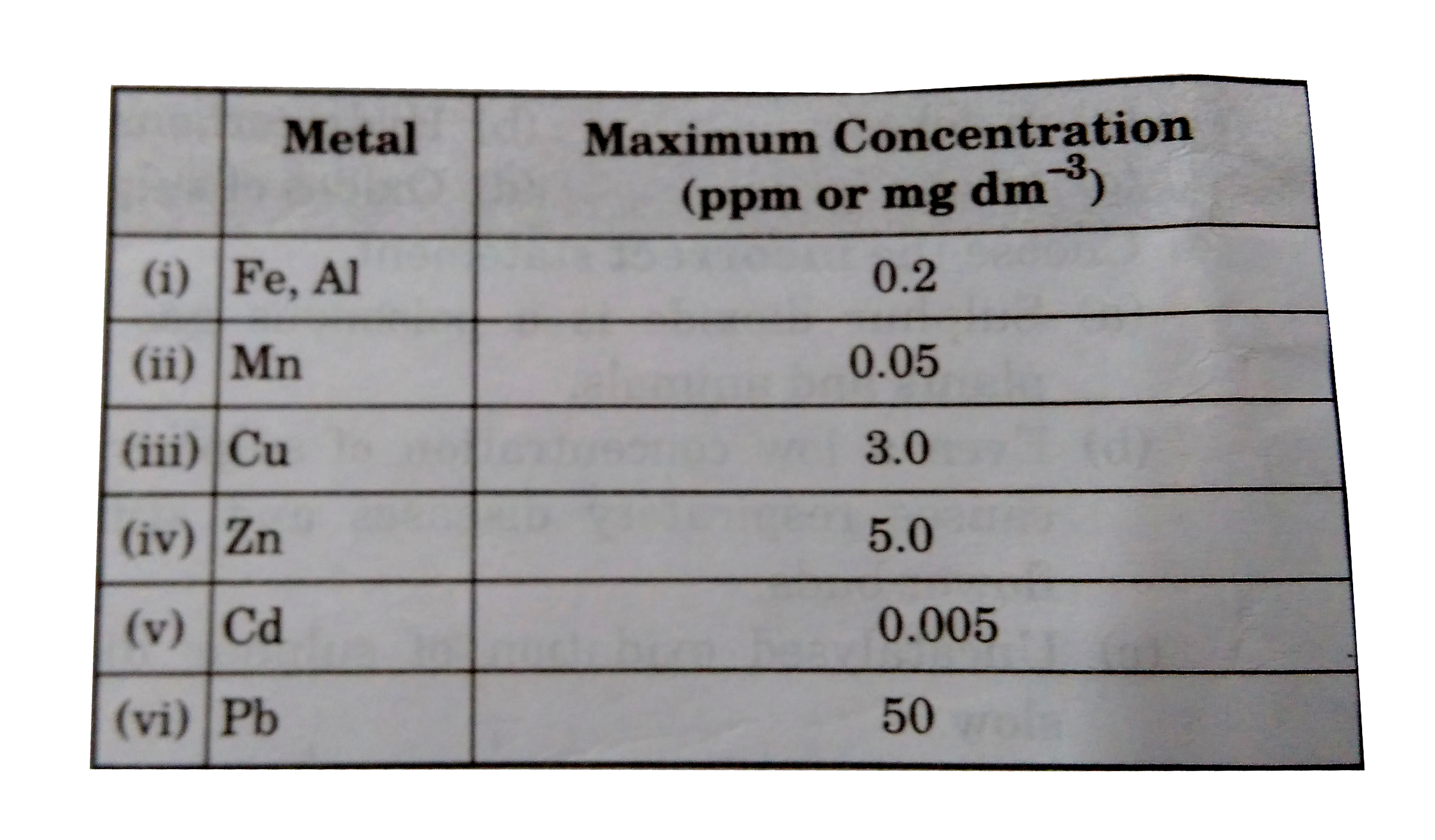The maximum allowed concentration in ppm of zinc in drinking water
5.0
0.05
3.0
0.2
The correct Answer is:3
Step by step video, text & image solution for The maximum allowed concentration in ppm of zinc in drinking water by Chemistry experts to help you in doubts & scoring excellent marks in Class 11 exams.
Updated on:21/07/2023Topper's Solved these Questions
- ENVIRONMENTAL CHEMISTRYBOOK - NARAYNACHAPTER - ENVIRONMENTAL CHEMISTRYEXERCISE - LEVEL-II (H.W)
23 Videos
- ENVIRONMENTAL CHEMISTRYBOOK - NARAYNACHAPTER - ENVIRONMENTAL CHEMISTRYEXERCISE - EXAMPLES
11 Videos
- ENVIRONMENTAL CHEMISTRYBOOK - NARAYNACHAPTER - ENVIRONMENTAL CHEMISTRYEXERCISE - LEVEL-IV
27 Videos
- CLASSIFICATION OF ELEMENTS AND PERIODICITY BOOK - NARAYNACHAPTER - CLASSIFICATION OF ELEMENTS AND PERIODICITY EXERCISE - EXERCISE - 4
17 Videos
- F-BLOCK ELEMENTSBOOK - NARAYNACHAPTER - F-BLOCK ELEMENTSEXERCISE - LEVEL-II (C.W)
1 Video
Similar Questions
Knowledge Check
The maximum allowable concentration of fluorides in drinking water is
A1.00 mg per litreB1.25 mg per litreC1.50 mg per litreD1.75 mg per litreThe maximum prescribed concentration of cadmium in drinking water in ppm is
A0.05B3C2D0.005The maximum prescribed concentration of cadmium in drinking water in ppm is
A0.05B3C2D0.005
The maximum prescribed concentration of copper in drinking water is:
View SolutionMaximum concentration of copper in drinking water is
View SolutionChoose the incorrect match for maximum prescribed concentration of some metals in drinking water.

View SolutionThe recommended concentration of fluoride ion in drinking water is up to 1 ppm as fluoride ion is required to make teen enamel harder by converting [3Ca3(PO4)2.Ca(OH)2] to :
View SolutionThe recommended concentration of fluoride ion in drinking water is up to 1 ppm as fluoride ion is required to make teeth enamel harder by converting [3Ca3(PO4)2.Ca(OH)2]
View Solution